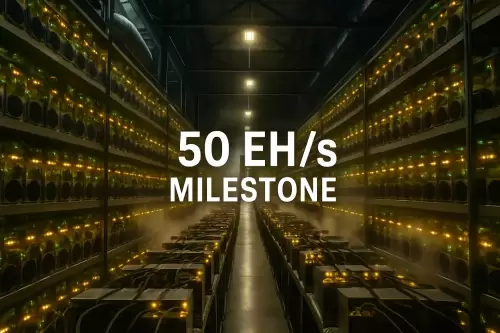 |
|
 |
|
 |
|
 |
|
 |
|
 |
|
 |
|
 |
|
 |
|
 |
|
 |
|
 |
|
 |
|
 |
|
 |
|
3月中旬、スタンフォード大学はブロックチェーンとAI会議を開催し、教授、スタートアップCEO、ベンチャーキャピタリスト(VCS)を集めました。

In mid-March, Stanford University hosted a Blockchain and AI conference, bringing together professors, startup CEOs, and venture capitalists (VCs). The event aimed to highlight the convergence of two major technologies: blockchain and AI. However, the conference could have benefited from highlighting Bitcoin and AI further, given Bitcoin's market dominance and the emerging innovations on Bitcoin Layer 2 solutions.
3月中旬、スタンフォード大学はブロックチェーンとAI会議を開催し、教授、スタートアップCEO、ベンチャーキャピタリスト(VCS)を集めました。このイベントは、ブロックチェーンとAIの2つの主要な技術の収束を強調することを目的としています。ただし、ビットコインの市場優位性とビットコインレイヤー2ソリューションの新たな革新を考えると、会議はビットコインとAIをさらに強調することで恩恵を受けた可能性があります。
One of the main challenges with the conference was that blockchain and AI have largely evolved as separate disciplines—with different investors, entrepreneurs, academics, and communities. While the idea was to merge the two fields, many speakers remained focused on their own domain, failing to establish clear connections between them. Perhaps a more fitting title would have been the Blockchain OR AI Conference.
会議の主な課題の1つは、ブロックチェーンとAIが、さまざまな投資家、起業家、学者、コミュニティとの別々の分野として主に進化したことです。アイデアは2つのフィールドをマージすることでしたが、多くのスピーカーは自分のドメインに焦点を合わせたままであり、それらの間の明確な接続を確立できませんでした。おそらく、よりぴったりのタイトルは、ブロックチェーンまたはAI会議だったでしょう。
For example, a venture investor presented an overview of the AI industry, showcasing impressive advancements in image, audio, and code generation. Meanwhile, a DeepMind researcher discussed adversarial machine learning, a phenomenon where slight manipulations to input data can drastically alter an AI's output. One striking example involved modifying just a few pixels in an image of a cat—causing the AI to misclassify it as guacamole.
たとえば、ベンチャー投資家はAI業界の概要を提示し、画像、オーディオ、コード生成の印象的な進歩を紹介しました。一方、深い研究者は、入力データのわずかな操作がAIの出力を大幅に変える可能性がある現象である敵対的な機械学習について議論しました。 1つの印象的な例には、猫のイメージで数ピクセルのみを変更することが含まれていました。AIをガカモールとして誤分類するためにAIを確認しました。
On the blockchain side, discussions revolved around various protocols, but much of the technology remains highly experimental—or, in some cases, non-existent yet. Blockchain-AI integrations are still in their infancy, with practical implementations yet to emerge.
ブロックチェーン側では、議論はさまざまなプロトコルを中心に展開されましたが、テクノロジーの多くは非常に実験的なままです。 BlockChain-AIの統合はまだ初期段階にあり、実用的な実装はまだ出現していません。
Proof of Computation
計算の証明
One of the more insightful contributions came from Dan Boneh, an applied cryptographer at Stanford. He discussed SNARKs (succinct non-interactive arguments of knowledge) and zero-knowledge proofs, which address a fundamental cryptographic problem: proving knowledge of a computation in an efficient way.
より洞察力に富んだ貢献の1つは、スタンフォードの適用された暗号学者であるDan Bonehから来ました。彼は、基本的な暗号化の問題に対処するSnarks(簡潔な非対話的議論)とゼロ知識の証明について議論しました。それは、計算の知識を効率的な方法で証明することです。
This principle is well-established in both blockchain and cryptography. For example: It’s computationally expensive to factor a large number into its two prime components, but verifying via multiplication is computationally cheap. It’s expensive to find a block header whose hash meets a target threshold, but verifying that it does is inexpensive.
この原則は、ブロックチェーンと暗号化の両方で確立されています。たとえば、2つの主要なコンポーネントに多数を考慮することは計算上費用がかかりますが、乗算を介して検証することは計算的に安価です。ハッシュがターゲットのしきい値を満たしているブロックヘッダーを見つけるのは費用がかかりますが、それがそうであることを確認することは安価です。
This asymmetry between computation and verification is critical in blockchain systems, where nodes constantly validate the work of others. In Bitcoin, nodes verify signatures and miners' proof of work. SNARKs extend this concept, enabling cryptographic proofs that are verifiable without revealing sensitive data.
計算と検証の間のこの非対称性は、ノードが他の人の作業を常に検証しているブロックチェーンシステムで重要です。ビットコインでは、ノードは署名と鉱夫の仕事の証明を確認します。 Snarksはこの概念を拡張し、機密データを明らかにすることなく検証可能な暗号化された証明を可能にします。
As AI agents become increasingly autonomous, a major challenge will be verifying computation while preserving privacy. Many are hesitant to upload sensitive data to OpenAI due to concerns over data security and prefer using their own models.
AIエージェントがますます自律的になるにつれて、プライバシーを維持しながら計算を検証することです。多くの人は、データセキュリティに対する懸念のために、機密データをOpenAIにアップロードすることをためらっており、独自のモデルを使用することを好みます。
This creates a market demand for privacy-preserving verification—a mechanism that allows users to prove an AI model executed a computation correctly without revealing the underlying data. Such a solution could unlock AI applications in domains like healthcare, defense, and finance, where data security is paramount. This will likely become a multi-billion-dollar industry in the next decade.
これにより、プライバシーを提供する検証に対する市場需要が生まれます。これは、ユーザーが基礎となるデータを明らかにすることなく、AIモデルが正しく計算を実行できることを証明できるメカニズムです。このようなソリューションは、データセキュリティが最重要であるヘルスケア、防衛、金融などのドメインでAIアプリケーションのロックを解除できます。これは、今後10年間で数十億ドルの産業になる可能性があります。
Interestingly, this concept originates from blockchain via networks to implement such cryptographic techniques. As Boneh pointed out, the idea of one machine cheaply verifying the expensive computation done by another emerged out of Bitcoin. But it may have a second, large application in AI.
興味深いことに、この概念は、ネットワークを介してブロックチェーンに由来し、このような暗号化技術を実装しています。 Bonehが指摘したように、あるマシンが別のマシンが行った高価な計算を安く検証するという考えは、ビットコインから出てきました。しかし、AIには2番目の大きなアプリケーションがある場合があります。
I hope to see future conferences place a greater emphasis on Bitcoin's contributions to these fields. BitVM, for example, leverages ideas from zero-knowledge proofs to create bridges between Bitcoin and new Layer 2 protocols—potentially enabling AI agents to interact with Bitcoin's ecosystem.
将来の会議が、これらの分野へのビットコインの貢献に重点を置いていることを望んでいます。たとえば、BITVMは、ゼロ知識証明からアイデアを活用して、ビットコインと新しいレイヤー2プロトコルの間にブリッジを作成します。これは、AIエージェントがビットコインのエコシステムと相互作用できるようになります。
免責事項:info@kdj.com
提供される情報は取引に関するアドバイスではありません。 kdj.com は、この記事で提供される情報に基づいて行われた投資に対して一切の責任を負いません。暗号通貨は変動性が高いため、十分な調査を行った上で慎重に投資することを強くお勧めします。
このウェブサイトで使用されているコンテンツが著作権を侵害していると思われる場合は、直ちに当社 (info@kdj.com) までご連絡ください。速やかに削除させていただきます。






























































